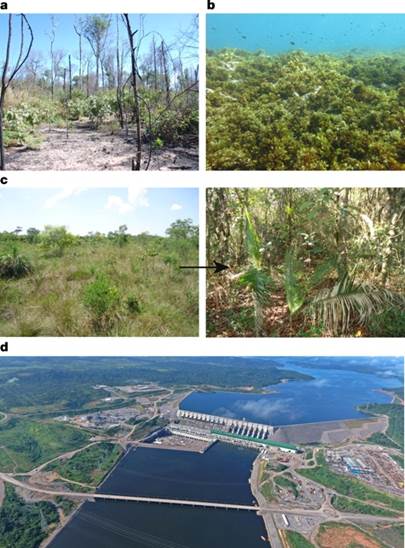

英国研究人员发布一项新研究说,全球最具多样性的生态系统已处在一个临界点,如果不及时采取有效措施,这些生态系统中的物种流失就会达到前所未有的程度且不可逆转。
由英国牛津大学和兰卡斯特大学研究人员领衔的团队深入分析了全球热带大草原、雨林、湖泊、河流以及珊瑚礁的状况。
这项刊登在英国《自然》杂志的报告显示,尽管这些生态系统仅覆盖了地球表面的40%,但它们却是全球超过四分之三物种的栖息地,包括90%以上的鸟类。如今这些生态系统中的物种生存状况非常令人担忧,许多物种面临来自过度捕捞、伐木等人类活动以及干旱等极端天气带来的巨大生存压力,并且随着气候变化的加深,这种压力也在加大。
生态系统的不稳定还会影响许多地区的人口。报告作者之一、兰卡斯特大学的约斯·巴洛教授说,以珊瑚礁为例,尽管它们仅覆盖了0.1%的海洋表面,但为全球2亿人提供了鱼类资源和海岸保护;而热带雨林、大草原能够存储陆地生物圈中40%的碳,并对一些重要农业区的降雨起到支撑作用。
研究人员呼吁全球加强这方面研究,以便及时采取有效措施避免热带生态系统的多样性流失。(来源:新华社 张家伟)
The future of hyperdiverse tropical ecosystems
Abstract The tropics contain the overwhelming majority of Earth’s biodiversity: their terrestrial, freshwater and marine ecosystems hold more than three-quarters of all species, including almost all shallow-water corals and over 90% of terrestrial birds. However, tropical ecosystems are also subject to pervasive and interacting stressors, such as deforestation, overfishing and climate change, and they are set within a socio-economic context that includes growing pressure from an increasingly globalized world, larger and more affluent tropical populations, and weak governance and response capacities. Concerted local, national and international actions are urgently required to prevent a collapse of tropical biodiversity.
原文链接:https://www.nature.com/articles/s41586-018-0301-1.pdf



